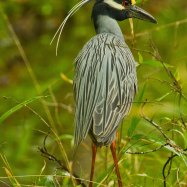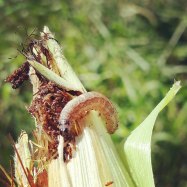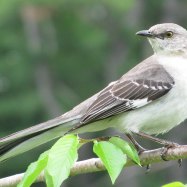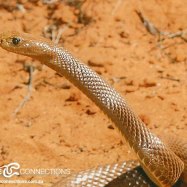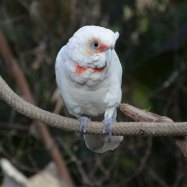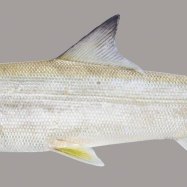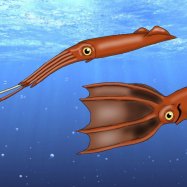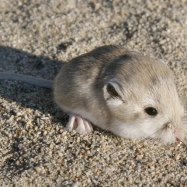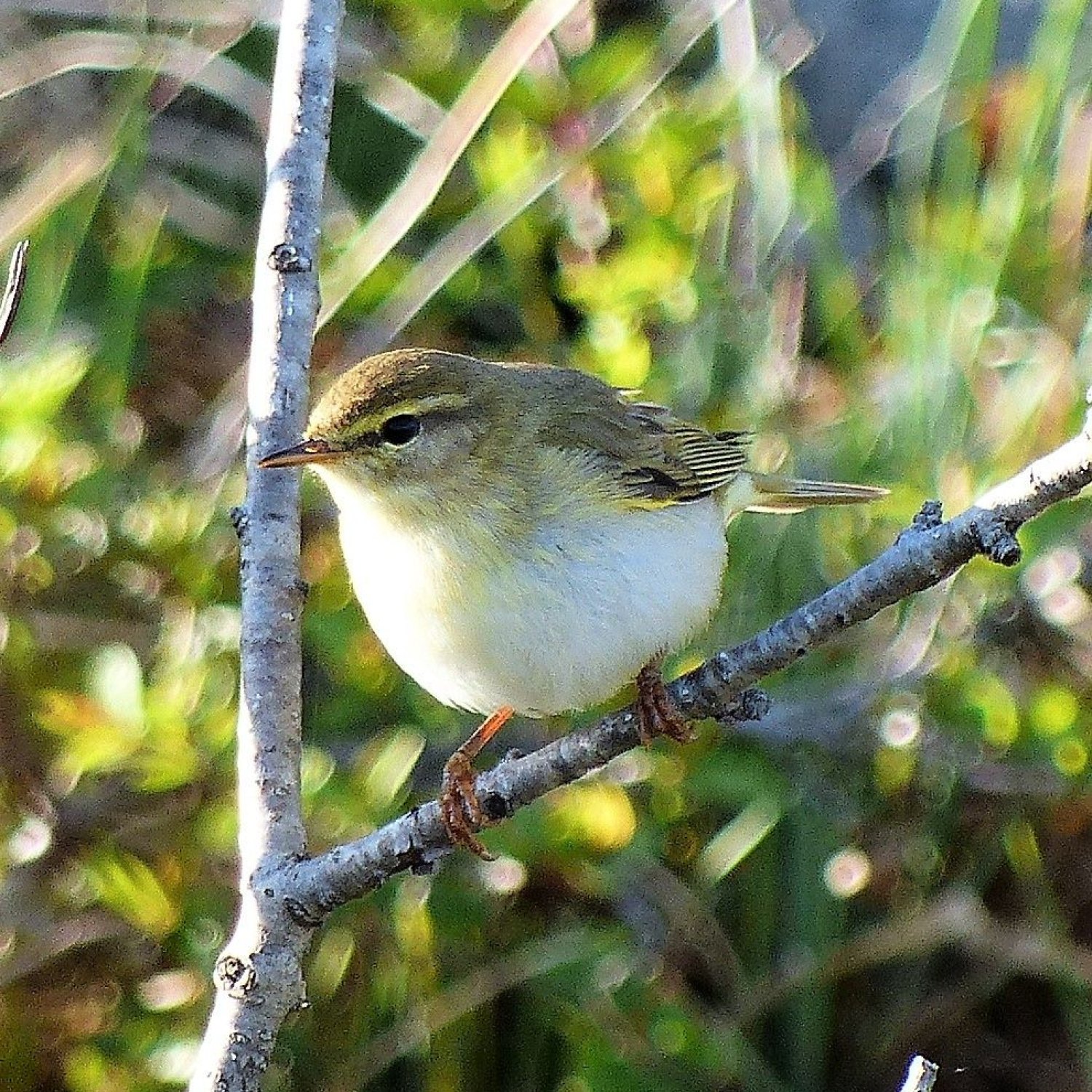
Willow Warbler
11-12.5 cm
The Willow Warbler is a small and slim bird with a pointed bill. Found in woodlands and gardens, this bird belongs to the family Phylloscopidae. With a length of 11-12.5 cm, it can easily camouflage in its natural habitat. Keep an eye out for this charming little bird on your next woodland walk! #WillowWarbler #Phylloscopidae #WoodlandAnimals
Animal Details Summary:
Common Name: Willow Warbler
Kingdom: Animalia
Habitat: Woodlands, gardens, parks, and hedgerows
The Chirpy Willow Warbler: A Delightful Little Bird That Brings Music to Woodlands and Gardens
The forests and gardens are filled with many beautiful birds, each with its unique characteristics and melodies. Among them is the charming Willow Warbler (Phylloscopus trochilus), a small passerine bird that belongs to the Phylloscopidae family. This delightful little bird, with its olive-green upperparts and pale yellow underparts, can be found in woodlands, gardens, and hedgerows across Europe and western Asia. With its insectivorous diet, distinctive coloration, and musical songs, the Willow Warbler is a fascinating creature that deserves to be in the spotlight Willow Warbler.A Brief Introduction to the Willow Warbler
The Willow Warbler, also known as the Phylloscopus trochilus, is a small bird that measures about 11-12.5 cm in length. They have slender bodies, with a pointed bill perfect for catching insects. The name "willow" in their common name comes from their affinity for nesting in willow trees. The scientific name "Phylloscopus" means "leaf hopper," reflecting their behavior of hopping through the leaves while foraging for food.Habitat and Distribution
The Willow Warbler can be found in a variety of habitats, including woodlands, gardens, parks, and hedgerows. They are primarily found in Europe and western Asia, where they breed, and spend the winter months in sub-Saharan Africa. They have an impressive migratory pattern, with some birds traveling up to 6400 km during their annual migration.In Europe, the Willow Warbler's range extends from the Arctic Circle in northern Scandinavia to the Mediterranean coast in the south Western Rat Snake. They have also been spotted in parts of North Africa, the Middle East, and Central Asia. In the United Kingdom, they are widespread, and their distribution is closely linked to the presence of large areas of woodland and shrubs.
Insectivorous Diet: A Key to Their Survival
As insectivorous birds, the Willow Warbler's diet mainly consists of insects such as flies, beetles, and caterpillars. They have been observed to be quite skilled at catching their prey, using their sharp beaks to pierce and extract insects from leaves and twigs. Their insatiable appetite for insects is essential for controlling insect populations and maintaining the health of the ecosystem.Interestingly, the Willow Warbler's diet shifts during different stages of its life. While breeding, they feed primarily on caterpillars, as these are protein-rich and essential for rearing their young. During migration, they switch to a diet of fruit, which provides them with a much-needed energy boost.
Adaptations for Survival
The Willow Warbler has several physical and behavioral adaptations that aid in its survival in the wild. Their olive-green upperparts act as camouflage against the canopy and make it easier for them to blend in while foraging for food. Their pointed bill is also essential for survival, allowing them to catch small insects and extract them from plants.Another fascinating adaptation is their ability to orient themselves using the Earth's magnetic field during migration. Researchers have found that the birds have a magnetic sense, allowing them to navigate to their wintering grounds accurately. This adaptation is crucial in their long and arduous journey across continents.
Threats to the Willow Warbler
Despite their remarkable ability to migrate long distances, the Willow Warbler faces several threats to their survival. Habitat loss, caused by deforestation, is a significant concern for these birds. As their name suggests, they prefer nesting in willow trees, but with the decline in willow woodlands, their nesting sites are becoming scarce. Fragmentation of habitats also poses a threat, as it can disrupt their migration pattern.The use of pesticides and insecticides in agriculture also poses a significant threat, as these chemicals can poison the birds' food sources. Climate change is another concern, as it can affect the availability of insects and food sources for the birds during breeding and migration.
Conservation Efforts
Several conservation efforts are in place to protect the Willow Warbler and their habitats. In the United Kingdom, the government has designated specific areas of land as Special Protection Areas (SPAs) to protect the Willow Warbler's nesting sites. These SPAs also provide a haven for other migratory birds, making it a vital initiative for preserving biodiversity.There are also initiatives to promote sustainable forestry practices and increase the number of willow trees in the wild, creating more nesting sites for the birds. The ban on harmful pesticides and insecticides also contributes to the birds' protection, ensuring a safe and healthy food supply for them.
Willow Warblers: Nature's Melodious Musicians
Apart from their appearance and diet, the Willow Warbler is famous for the beautiful melodies it produces. The male birds have a distinct singing pattern, with a high-pitched call that starts soft and gets louder before trailing off. This song is used to attract mates and defend their territories during breeding season.The Willow Warbler's song is a highly researched topic, with studies showing that they have a complex vocal repertoire. They have been observed mimicking other birds' songs, such as the Chiffchaff, Meadow Pipit, and Greenfinch, making their song more varied and intricate. Their songs are also a crucial means of communication, with different songs used for different purposes, such as warning of predators or calling for a mate.
Conclusion: A Tiny Bird with a Big Impact
In conclusion, the Willow Warbler may be small in size, but it has a significant impact on its ecosystem. With its adorable appearance, musical talents, and vital role in insect control, it is a remarkable creature that deserves our attention and protection. As we face challenges such as habitat loss and climate change, it is crucial to put conservation efforts in place to preserve this charming little bird and its beautiful songs. So, the next time you're in the woodlands or gardens, keep an eye out for the Willow Warbler, and you might just catch a glimpse of its enchanting melodies.

Willow Warbler
Animal Details Willow Warbler - Scientific Name: Phylloscopus trochilus
- Category: Animals W
- Scientific Name: Phylloscopus trochilus
- Common Name: Willow Warbler
- Kingdom: Animalia
- Phylum: Chordata
- Class: Aves
- Order: Passeriformes
- Family: Phylloscopidae
- Habitat: Woodlands, gardens, parks, and hedgerows
- Feeding Method: Insectivorous
- Geographical Distribution: Breeds in Europe and western Asia, and winters in sub-Saharan Africa
- Country of Origin: Europe and western Asia
- Location: Woodlands and gardens
- Animal Coloration: Olive-green upperparts, pale yellow underparts
- Body Shape: Small and slim with a pointed bill
- Length: 11-12.5 cm
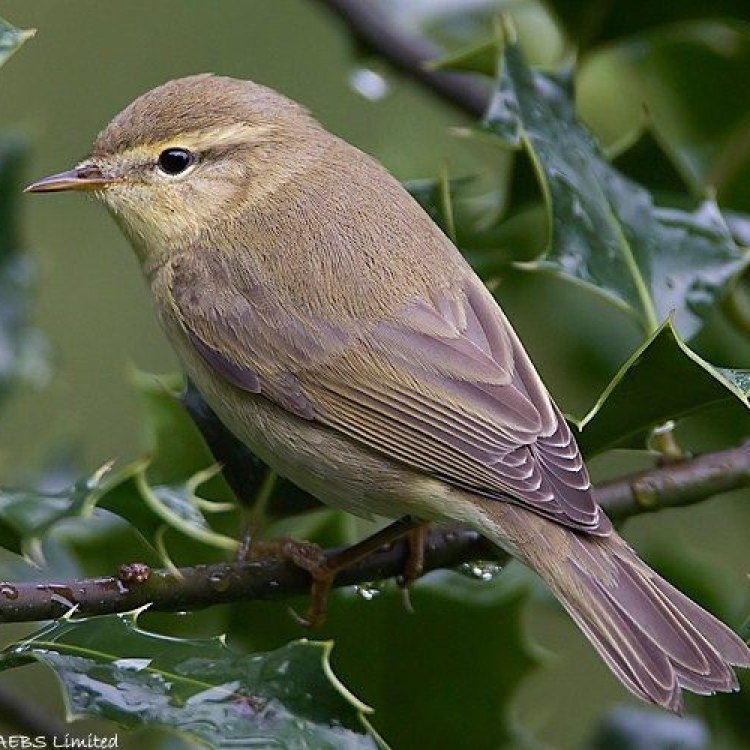
Willow Warbler
- Adult Size: Small
- Average Lifespan: Up to 9 years
- Reproduction: Sexual
- Reproductive Behavior: Monogamous
- Sound or Call: Melodious song resembling a descending cadence
- Migration Pattern: Long-distance migratory
- Social Groups: Solitary
- Behavior: Active and agile during foraging
- Threats: Habitat loss and degradation
- Conservation Status: Least Concern
- Impact on Ecosystem: Important insect control in their habitats
- Human Use: Not used by humans
- Distinctive Features: Yellowish body with olive-green upperparts
- Interesting Facts: One of the first songbirds to arrive in Europe during spring migration
- Predator: Birds of prey, snakes, and mammals
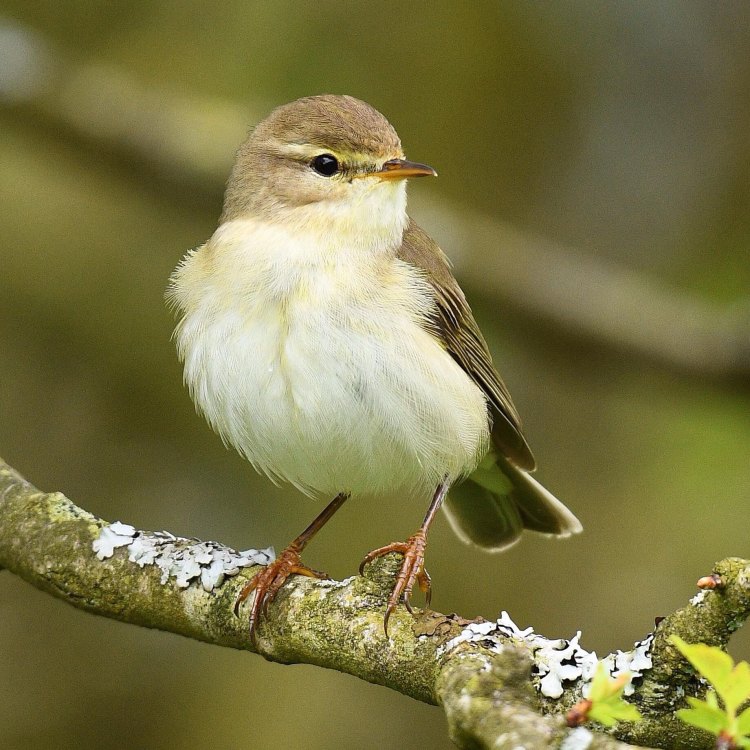
Phylloscopus trochilus
The Enchanting Willow Warbler: A Delightful Melody of Nature
Nature is full of wonders, and one of the most delightful ones is the Willow Warbler. This small, vibrant bird has been capturing hearts with its melodious song and lively behavior for centuries. Found across Europe, Asia, and parts of Africa, this little-known species has a lot to offer to the world. In this article, we will delve deeper into the unique features of the Willow Warbler and explore its significant role in the ecosystem PeaceOfAnimals.Com.The Willow Warbler (Phylloscopus trochilus) is a small passerine bird, measuring only 11-12.5cm in length and weighing merely 9-11g. Its name is derived from its fondness for nesting in willow trees. Not only that, but this charming bird also uses the twigs of willow trees to construct its dome-shaped nest, camouflaging it perfectly in the dense foliage.
With an average lifespan of up to 9 years, the Willow Warbler stays loyal to its breeding site, returning every year to build a new nest. This bird has a unique reproductive behavior as it mates monogamously, forming a bond that lasts throughout its lifespan. The pair works together to raise their young, with both the male and female taking turns to incubate the eggs and feed the hatchlings.
One of the most distinctive features of the Willow Warbler is its melodious song. Its call is a series of notes that resemble a descending cadence, often described as a sweet, warbling tune White Crappie. These songs serve several purposes, from attracting a mate to defending their territory. Interestingly, this small bird is also notable for its long-distance migratory pattern, traveling thousands of miles from its breeding grounds in Europe to its winter destinations in Africa.
The Willow Warbler is a solitary bird, mainly seen foraging actively and adeptly among the trees and shrubs in its habitat. It has an agile and swift movement, often flying low to the ground, searching for its main food source - insects. This tiny bird plays an essential role in the ecosystem as it helps control the population of insects in its habitat, keeping their numbers in check.
Despite its critical role in the ecosystem, the Willow Warbler faces significant threats in the form of habitat loss and degradation. As human activities continue to encroach upon their natural habitats, the population of these delightful birds is declining. Deforestation, agriculture, and urbanization are some of the major factors contributing to their decline. As a result, the Willow Warbler is currently classified as a species of Least Concern on the IUCN Red List, but their numbers are still decreasing.
It is crucial to protect the Willow Warbler and their habitats to ensure their survival and maintain the balance of the ecosystem. These birds are vital for the control of insect populations, and their decline could have far-reaching consequences on the environment. Conservation efforts are necessary to safeguard their breeding sites and create protected areas where they can thrive.
Despite their enchanting presence in the natural world, the Willow Warbler is not used by humans in any way. They are not kept as pets or used for any form of commercial purposes. However, they can provide an excellent opportunity for bird-watching and nature enthusiasts to observe their behaviors and learn more about their lives.
The physical appearance of the Willow Warbler is another unique feature that sets it apart from other birds. This species has a yellowish body with olive-green upperparts, making it easily recognizable in the wild. Its plumage serves as excellent camouflage, blending perfectly with the greenery of their habitat.
Apart from their distinctive features, the Willow Warbler is also known for some interesting facts. It is one of the first songbirds to arrive in Europe during the spring migration, often being seen as a sign of the changing seasons. This tiny bird covers an astonishingly long distance during its migratory journey, traveling from Africa to Europe and back every year.
Like all other animals in the wild, the Willow Warbler has its fair share of predators. Birds of prey, snakes, and mammals are some of the most common predators of the Willow Warbler. But this bird has developed certain adaptations to keep itself safe from these predators. For instance, their nest is expertly hidden and camouflaged, making it difficult for predators to find. Moreover, their swift and agile movements also help them escape danger quickly.
In conclusion, the Willow Warbler is a small but mighty bird with a significant impact on the ecosystem. Its melodious song, reproductive behavior, and vital role in insect control make it an enchanting species to study and observe. However, the threats it faces indicate the urgent need for conservation efforts to protect this delightful bird and its habitat. Every effort must be made to preserve this natural wonder and ensure its survival for years to come.
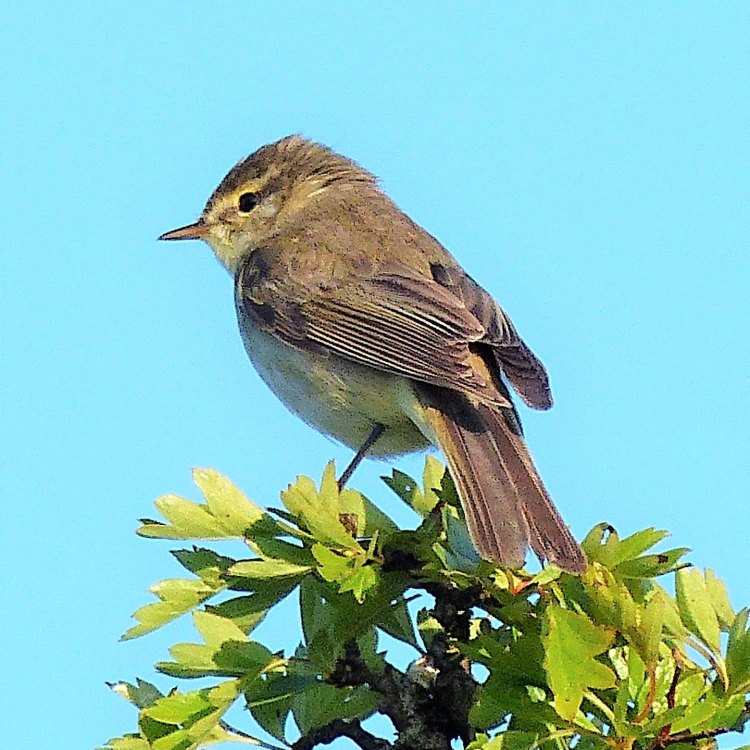
The Chirpy Willow Warbler: A Delightful Little Bird That Brings Music to Woodlands and Gardens
Disclaimer: The content provided is for informational purposes only. We cannot guarantee the accuracy of the information on this page 100%. All information provided here may change without prior notice.



